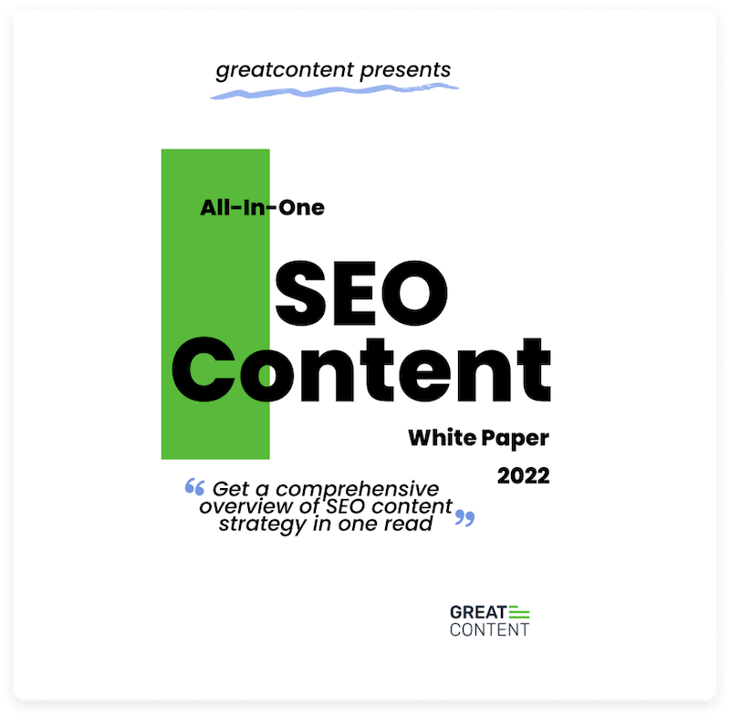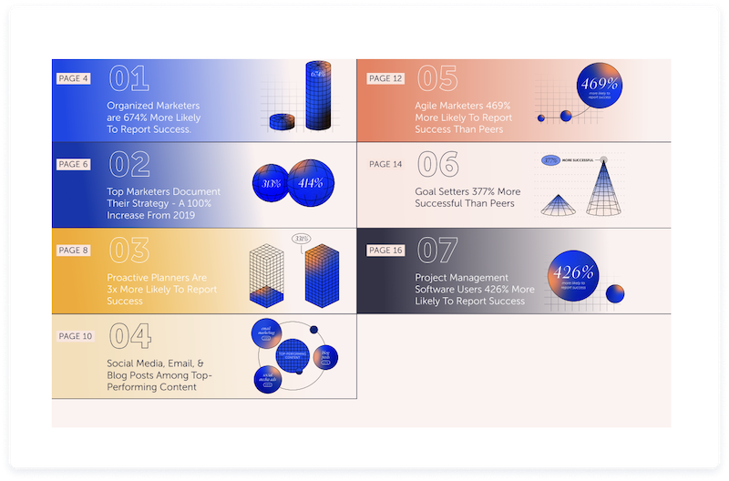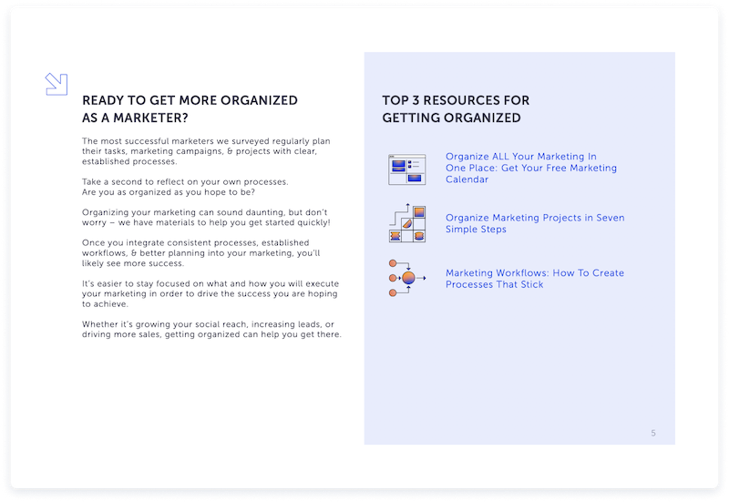If you want to establish your company as an industry expert, increase engagement, and raise your brand awareness, then a white paper can be your best choice.
Why white paper, you may ask? Isn’t it something boring and dry that only scientists and officials are interested in? Not at all! Marketing and business white papers can be as formal or engaging as you make them. And they are perfect for reaching and retaining customers. The white paper format offers the readers educational in-depth content and valuable solutions to their nagging problems.
Here’s how your digital white paper can look if you create it with FlippingBook Online, a service for making interactive online documents.
In our article, we’ll help you learn what a marketing and business white paper is, its main types and when to use them, and the best examples for your inspiration. Plus, we’ll talk a bit about white paper as a lead generation tool. Let’s get right to it!
What Is a White Paper?
A white paper is a well-researched and authoritative piece of content on a specific topic that educates the readers, presents the problem, and provides the solution and tactics to solve this problem.
Marketers create white papers to establish their thought leadership, educate their audience on a particular topic, or promote certain tactics and technology in their field. Plus, marketers often gate white papers behind a lead form—thus, such a document can become another channel for lead generation and sales. We’ll talk about that later in the article.
What’s important to mention is that the white paper format is not used for a pitch or sales promotion at all. Blog posts and ebooks serve that purpose better. White paper is truly educational content designed to inform and persuade, and it’s based on well-researched facts and data alone.
And now let’s break down the main types of white papers and their examples so that you could start creating your white papers with a solid foundation.
Main Types of White Papers
The Problem/ Solution
Best for: Attracting and educating prospects in the first and middle stages of the buying journey: they are facing a certain problem and start researching ways to meet their goals.
The problem and solution type is one of the most popular kinds of white papers. Such a document focuses more on highlighting and outlining the problem, making it clear to the audience why they need a solution, rather than promoting the solution. And only in the last part of the white paper, you can present your innovative approach, product, or service to solve a particular problem. It should be useful and practical and might have some sort of formula to follow or a step-by-step structure that shows your reader how to tackle the problem you’re presenting.
The Problem/ Solution White Paper Example: All-In-One SEO Content by Greatcontent

Check out the whole white paper
Greatcontent specializes in the field of multilingual SEO and e-commerce content creation. They know that their audience and potential customers want to outgrow the competition and rank high in search results. So the prospects want to learn more about how SEO works, what its benefits and challenges are, and how they can produce customer-oriented, optimized, and well-researched content.
And that’s where the ‘All-In-One SEO Content’ white paper by Greatcontent comes in handy. The document leads the readers through the entire process of search engine optimization with its traps and pitfalls and then explains how to make the content rank high. On the last pages of the white paper, the readers can find the information about the company itself and the offer to help with creating an SEO strategy that meets their wishes and needs.
The white paper is designed in a clear and business-like way with a convenient table of contents, chapters, paragraphs, and bullets. It’s very easy and comfortable to read which is one of the most important features of a document heavy with valuable information.

The Backgrounder
Best for: Prospects comparing a shortlist of solutions near the end of the customer journey when they want more information about your specific product or service. The backgrounder can also support a product launch for partners, journalists, and analysts.
The backgrounder white paper includes educational content describing the most important features and benefits of a product or service. Such a white paper is filled with technical details and data to give the readers the fullest understanding of a product or service. Here’s what you can use your backgrounder for:
- List scientific data, research, and statistics that support the effectiveness of the product.
Include case studies to show what different customers have done thereby showcasing credibility. - Explain how to start using your product, describe all the features and why it’s a game changer.
- Establish your brand as an industry leader based on performance, innovation, or some other documentable characteristic.
The Backgrounder White Paper Example: Trend Report. Marketing Strategy 2022 by CoSchedule
 Check out the whole white paper
Check out the whole white paper
CoSchedule is one of the leading marketing industry providers of content calendar, content optimization, and marketing education products. So the company establishes itself as an industry leader that creates educational content full of valuable data and research. It states that as the global pandemic has changed marketing, from more remote working to less predictability, organization and process are more important to marketers now than ever before. CoSchedule’s ‘2022 Trend Report on Marketing Strategy’ uncovers how successful marketers around the world work and adds some tips to help the audience improve their own strategy to drive better results.
What makes this white paper stand out is that it comes together with a specially created nice-looking landing, so that people can read the main points right on the page and can also download the white paper. The design of the document differs from the common types of white paper: it’s bright and colorful, with a beautifully designed table of contents, chapters, graphs, and icons.

The white paper structure is very convenient: each of the chapters introduces some scientific data and then offers relevant resources or products from CoSchedule. This way, people get valuable knowledge and can find the tools to help them with their marketing as well.

The Numbered List
Best for: Engaging prospects in the early stages of the customer journey in a light and easy way—people who are looking for general industry information and want to be better informed.
Numbered lists are the most accessible type of white paper that conveys information to a wide audience. Light on the terms and tech details and created with readability in mind, numbered list white papers answer common questions about a product or service while raising your brand awareness. Such a white paper helps deliver information in a way that’s less intimidating and, if you’re up for it, fairly entertaining.
The Numbered List White Paper Example: 16 Steps to Optimize Your Mobile Trade-in Program by Hyla Mobile

Check out the whole white paper
As part of Assurant's Connected Living business, HYLA Mobile provides trade-in and upgrade solutions for the mobile device ecosystem of mobile operators. They created a white paper that describes how to optimize the mobile trade-in program in 16 easy steps. The paper states that it’s important to monitor such programs carefully to determine how well they are performing and lists thorough steps that can become a useful guide for every company.
The white paper is quite short and easy to read and can be used as a step-by-step guide, thus reaching the goal of a numbered list type. And in the end, the readers can learn more about HYLA Mobile as an expert and reach out to them for their services.

White Paper as a Lead Generation Tool
As we’ve mentioned earlier, you can use white papers as your lead generation tool if you gate them with a lead form. The most popular gated white paper types are the ones that contain expert tips, advice from well-known professionals, or new and innovative industry research.
Usually, a company creates a separate landing page or a section on their website that includes a short description of what information readers can expect to find in the white paper. The landing page has a form where the readers can enter their personal information and thus gain access to the document. After entering the information, visitors can download the white paper right away or receive the gated content in their inbox.
There are other ways to collect leads with your white papers. For instance, here at FlippingBook, we’ve developed our own built-in lead capture form. It helps you collect leads right within your digital flipbook and all the lead info is gathered into one convenient dashboard. This way, you can start working with your leads right in your account without going anywhere. What’s more, our lead capture form is customizable: there are several fields that you can choose from or even set your own fields and rearrange them to your liking. And thanks to Zapier integration, you can pass the leads straight into your CRM or Google Sheets list for easier management.
💡 Want to collect high-quality leads with your white papers?
According to our research, 90% of emails submitted through the FlippingBook Online lead capture form are valid. Thus, you get high-quality leads right from your white paper!
See how the FlippingBook lead capture form can look in the example below.
Want to create your own white paper with a lead capture form? Check out our free 14-day trial and start generating leads today.
Wrap-Up
A white paper can empower your marketing strategy and help you reach customers in a new way. So knowing what type works best for you and where you can use it, is crucial. We hope that our article will give you a nice starting point on your way to creating white papers.





